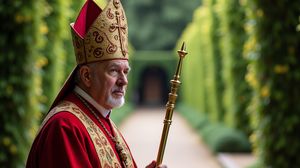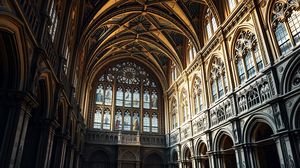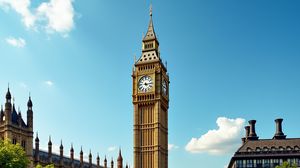
The Garden Museum in Lambeth is a unique attraction that celebrates the rich history and culture of gardening in the United Kingdom. Housed in the deconsecrated St Mary's-at-Lambeth church, the museum offers visitors a glimpse into the evolution of British gardens and their significance.
An interesting feature of the museum is its location itself; it was rescued from demolition in 1977 by Rosemary Nicholson, whose passion for garden history led to the creation of this institution. The museum sits just across the Thames from the Houses of Parliament, providing a peaceful escape from the bustling city.
One of the quirkiest aspects of the Garden Museum is that it includes tombs within its grounds, such as that of John Tradescant, who was a 17th-century gardener and plant hunter. His tomb is a place of pilgrimage for gardening enthusiasts, making the museum not just a gallery of artifacts but also a historical site of interest.
Visitors to the museum can explore a wide array of exhibits that cover everything from ancient horticultural practices to contemporary trends in floral design. The exhibits are often accompanied by art installations, which enhance the visual and educational experience.
The museum also boasts a beautiful cafe that opens onto the newly redesigned Sackler Garden. Designed by the acclaimed garden designer Dan Pearson, this tranquil oasis features a variety of plants chosen for their seasonal interest, offering a serene backdrop for a leisurely visit.
If you're interested in London's hidden green spaces, the museum offers guided tours and talks that delve into the stories behind some of the capital's most intriguing gardens. These events are led by experts, providing deeper insights into the gardening world.
For those interested in architecture, the transformation of this medieval church into a modern museum with award-winning design elements is in itself noteworthy. The stunning combination of ancient and contemporary styles makes it a fascinating visit for anyone interested in architecture or history.

Making the Most of Your Visit:
If you're interested in the history behind the museum, don't miss the memorial displays dedicated to John Tradescant. His tomb is right in the museum's garden and it provides a unique historical touch that gardening enthusiasts will find fascinating.
Be sure to explore the Tower. Climbing up the 131 steps might be a bit of a workout, but the reward is a spectacular view of London, including iconic landmarks like the Houses of Parliament. It's a great way to see the city from a different perspective!
Check out the temporary exhibitions that frequently rotate. They often feature niche topics within the gardening world and can provide deep insights or a fresh perspective, even for seasoned garden lovers.
The café within the museum is a gem. Try to plan your visit so you have time for a coffee break or light lunch in their beautiful setting. The dishes are often locally sourced and connect beautifully with the overall ethos of the museum.
Some of the best experiences come from the talks and events hosted at the museum. If you're keen on learning, try to coincide your visit with one of these; they often cover intriguing subjects within the realm of horticulture and offer the chance for engaging discussions.

Visiting Times & Costs:
The Garden Museum in Lambeth is open to the public and offers visitors a range of engaging experiences related to the history and culture of gardening in the UK.
Opening Hours: The museum is generally open all year round, from Sunday to Friday, 10:30 AM to 5:00 PM, and on Saturdays from 10:30 AM to 4:00 PM. Do check the museum's website for any special closures or changes to these timings as they can vary on holidays or during special events.
Admission Fees:
- Adults: £14
- Concessions: £11 (Includes seniors, students, and those with disabilities)
- Children under 16: Free
- Garden Museum Friends: Free
Certain temporary exhibitions and events might incur additional charges, so it's wise to check prior to visiting.
Accessibility: The museum is committed to ensuring accessibility for all visitors. The main areas are wheelchair accessible, and there is also an accessible toilet on-site. However, please note that access to the Tower involves a climb of 131 steps, which may not be suitable for all visitors. Service animals are welcome.

Address & Map:

Nearby:























